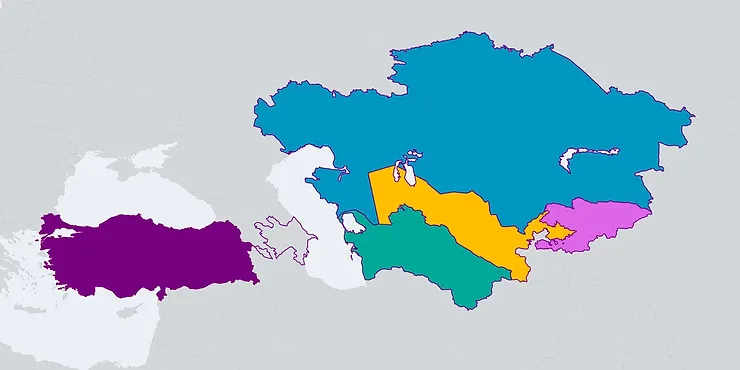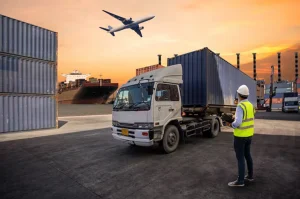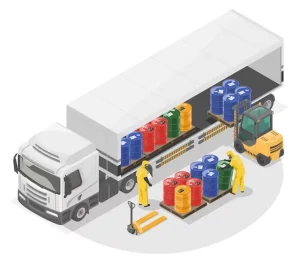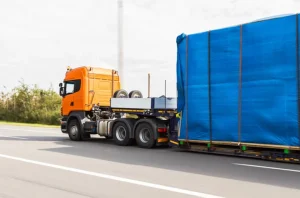Freight transportation of goods internationally requires selecting the right route and understanding the intricacies involved to ensure success. One of the most significant routes in today’s global trade is from Turkey to Central Asia. This article aims to provide an in-depth look at what you should know about freight transportation along this vital corridor.
Understanding the Logistics Landscape 🗺️
Main Trade Routes
Freight transportation from Turkey to Central Asia involves several key trade routes that leverage a combination of land and sea pathways to ensure efficient and reliable delivery of goods. These routes are integral to connecting Turkey with Central Asian markets, facilitating trade and economic growth.
1. Route through Georgia and Azerbaijan
One of the most prominent routes from Turkey to Central Asia passes through Georgia and Azerbaijan. This route includes:
Goods are transported by road from Turkey to Georgia, using well-established road networks. From Georgia, shipments can be sent to Azerbaijan, then goods continue their journey via Caspian Sea into Central Asian countries such as Kazakhstan and Turkmenistan.
This route is popular because it’s efficient and has straightforward customs processes.
2. Route through Iran
Another important route for freight transportation from Turkey to Central Asia goes through Iran.
Goods are transported from Turkey to Iran by road, entering through border crossings like Bazargan. From Iran, shipments proceed by road or rail to Central Asian destinations, utilizing key border crossings into Turkmenistan and other countries.
This route benefits from a well-established infrastructure and strategic location, providing a viable alternative for shipping goods.
3. Route via the Black Sea and Caspian Sea
For certain types of cargo, particularly large or bulk shipments, the combined sea route through the Black Sea and Caspian Sea is advantageous.
Goods are shipped from Turkish ports like Istanbul or Samsun across the Black Sea to Georgian ports such as Poti or Batumi. From Georgian ports, cargo is then transported overland to ports in Azerbaijan on the Caspian Sea. Finally, goods are shipped across the Caspian Sea to Kazakhstan’s ports, such as Aktau, before continuing overland to various Central Asian destinations.
This route is particularly useful for large-volume shipments due to its capacity and cost-effectiveness.
4.The Trans-Caspian International Transport Route (TITR)
The TITR, also known as the Middle Corridor, is a strategic multimodal route connecting Europe and Asia via Turkey.
Starting from Turkey, goods are transported by rail through Georgia and Azerbaijan.
The cargo is then shipped across the Caspian Sea to Kazakhstan. From Kazakhstan, shipments continue by rail to various destinations in Central Asia, including Uzbekistan, Kyrgyzstan, and beyond.
The TITR is a critical route for enhancing trade connectivity between Europe, Turkey, and Central Asia, offering a reliable and efficient corridor.
Understanding these key trade routes is essential for planning effective and efficient freight transportation from Turkey to Central Asia. Each route offers unique advantages and considerations, depending on the type of cargo, urgency, and cost factors involved. By leveraging these routes, businesses can ensure the timely and secure delivery of their goods to Central Asian markets, contributing to the region’s economic integration and growth.
Major Challenges and Solutions
Freight transportation from Turkey to Central Asia involves navigating a variety of challenges. However, with strategic planning and the right logistics partner, these challenges can be effectively managed. Below, we outline some of the major challenges and corresponding solutions.
1. Border Delays
One of the most common challenges in international logistics is delays at borders. These can occur due to lengthy customs procedures, inspections, and regulatory checks.
Solutions:
Efficient Customs Brokerage: Utilizing experienced customs brokers who are familiar with the regulations and requirements of each country can expedite the clearance process.
Proper documentation: Ensuring all paperwork is complete and accurate before reaching the border can prevent unnecessary delays.
2. Varying Regulations
Each country along the route from Turkey to Central Asia has its own set of regulations and standards. Navigating these differing requirements can be complex and time-consuming.
Solutions:
Regulatory Expertise: Partnering with a logistics provider, which has extensive knowledge of the regulations in each country, ensures compliance and smooth transit.
Continuous Monitoring: Keeping abreast of regulatory changes and updates to avoid any compliance issues.
3. Geopolitical Issues
Geopolitical developments can impact transportation routes, causing disruptions or requiring changes in plans.
Solutions:
Alternative Routes: Identifying and planning alternative routes in advance can mitigate the impact of geopolitical issues. Diversifying transportation options ensures flexibility.
Risk Management: Implementing a robust risk management strategy that includes geopolitical risk assessment and contingency planning.
Strong Network: Leveraging a strong network of partners and contacts across the region to stay informed and respond quickly to changes.
4. Infrastructure Limitations
Certain areas along the transportation route may have underdeveloped infrastructure, leading to logistical bottlenecks.
Solutions:
Route Optimization: Carefully planning routes to avoid areas with poor infrastructure or scheduling shipments during times when congestion is less likely.
Investment in Technology: Using technology to monitor and optimize routes in real-time can help avoid bottlenecks and ensure efficient transportation.
Collaboration with Local Authorities: Working with local authorities to understand infrastructure challenges and plan accordingly.
5. Security Concerns
Transporting goods internationally always carries security risks, including theft, damage, and loss.
Solutions:
Secure Packaging: Ensuring goods are securely packaged to prevent damage during transit.
Tracking Systems: Implementing advanced tracking and monitoring systems to keep a close watch on shipments and respond quickly to any issues.
Insurance: Securing comprehensive insurance coverage for goods in transit to protect against potential losses.
6. Weather Conditions
Adverse weather conditions can impact transportation schedules and safety.
Solutions:
Weather Monitoring: Using advanced weather forecasting tools to plan shipments around adverse weather conditions.
Flexible Scheduling: Maintaining flexibility in scheduling to allow for adjustments based on weather forecasts.
Proper Handling: Ensuring goods are properly protected against weather-related damage during transit.
Modes of Transportation and their advantages 🚛
Freight transportation from Turkey to Central Asia involves multiple modes of transportation, each offering unique advantages. Depending on the type of cargo, delivery time, and cost considerations, choosing the right mode of transportation is crucial for efficient logistics.
Land Transportation
Benefits of Land Transport 🚚
Cost-Effective: Land transport is generally more affordable compared to air freight, making it a cost-effective option for various types of cargo.
Versatility: Suitable for a wide range of cargo types, including standard, oversized, and hazardous materials.
Sea Freight
Advantages of Sea Freight 🚢
Large Volumes: Sea freight is ideal for transporting large volumes of cargo, especially bulk and heavy items.
Cost Efficiency: It is generally more economical for long-distance and large shipments compared to air transport.
Intermodal Connectivity: Sea freight often connects seamlessly with other transport modes like rail and road, facilitating efficient logistics chains.
Air Freight
Speed and Efficiency of Air Transport 🛫
Fastest Transit: Air transport is the fastest way to transport goods, which greatly reduces delivery times.
Reliability: It offers high reliability with scheduled flights and minimal delays.
Security: Provides enhanced security for valuable and sensitive cargo due to stringent air transport regulations.
Rail Transportation
Benefits of Rail Transport 🚂
Efficiency: Rail transport can handle large volumes of cargo efficiently, making it ideal for bulk goods.
Cost-Effective: It is often more cost-effective than road transport for long distances.
Toptrans’ Services 🚛🌍
Toptrans offers a comprehensive range of services designed to meet the diverse logistics needs of clients transporting cargo between Turkey and Central Asia. With extensive expertise and a robust logistics network, Toptrans ensures efficient, reliable, and hassle-free freight transportation.
Comprehensive Transportation Modes 🚢✈️🚆
Toptrans leverages multiple modes of transportation to provide tailored logistics solutions based on client requirements.
1. Road Transport 🛣️
Extensive Road Network: Utilizing well-developed road networks to connect major cities and industrial hubs in Turkey with destinations in Central Asia.
Flexible Scheduling: Offering flexible scheduling options to accommodate client needs and optimize delivery times.
2. Sea Freight ⚓
Major Ports Utilization: Leveraging key Turkish ports like Istanbul, Izmir, and Mersin for sea freight to ports in Georgia and Azerbaijan.
Intermodal Solutions: Combining sea freight with road and rail transport for efficient, cost-effective logistics.
Bulk and Container Shipping: Handling both bulk and containerized cargo, ensuring secure and efficient transport.
3. Air Freight ✈️
Fast and Reliable: Offering fast and reliable air freight services for urgent and high-value shipments.
Major Airports: Utilizing major airports in Turkey and Central Asia, such as Istanbul Airport and Almaty Airport.
4. Rail Transport 🚆
Bulk Cargo Handling: Ideal for transporting large volumes of goods over long distances efficiently.
Specialized Services 🌟
1. Customs Brokerage 📑
Expert Customs Clearance: Providing expert customs clearance services to navigate complex regulatory requirements.
Compliance Assurance: Ensuring compliance with all relevant regulations to avoid delays and penalties.
Documentation Support: Assisting with the preparation and submission of necessary documentation.
2. Tracking and Monitoring 📡
Real-Time Tracking: Implementing advanced tracking systems to monitor shipments in real-time.
Transparent Communication: Keeping clients informed about the status of their shipments throughout the transportation process.
3. Warehousing and Distribution 🏢
Storage Solutions: Providing secure and flexible storage solutions for different types of cargo.
Efficient Distribution: Ensuring efficient distribution services to meet client demands and delivery schedules.
4. Handling of Special Cargo ⚠️
Dangerous Goods: Expertise in handling and transporting dangerous goods in compliance with safety regulations.
Oversized Cargo: Providing solutions for oversized and heavy cargo, including specialized equipment and permits.
Perishable Goods: Offering temperature-controlled transportation for perishable goods, ensuring freshness and quality.
Shipping freight from Turkey to Central Asia requires navigating complex logistics, selecting appropriate transportation modes, and ensuring compliance with regulations. Partnering with an experienced logistics provider like Toptrans can make this process seamless and efficient. Contact us today to get a quote and experience hassle-free shipping.








